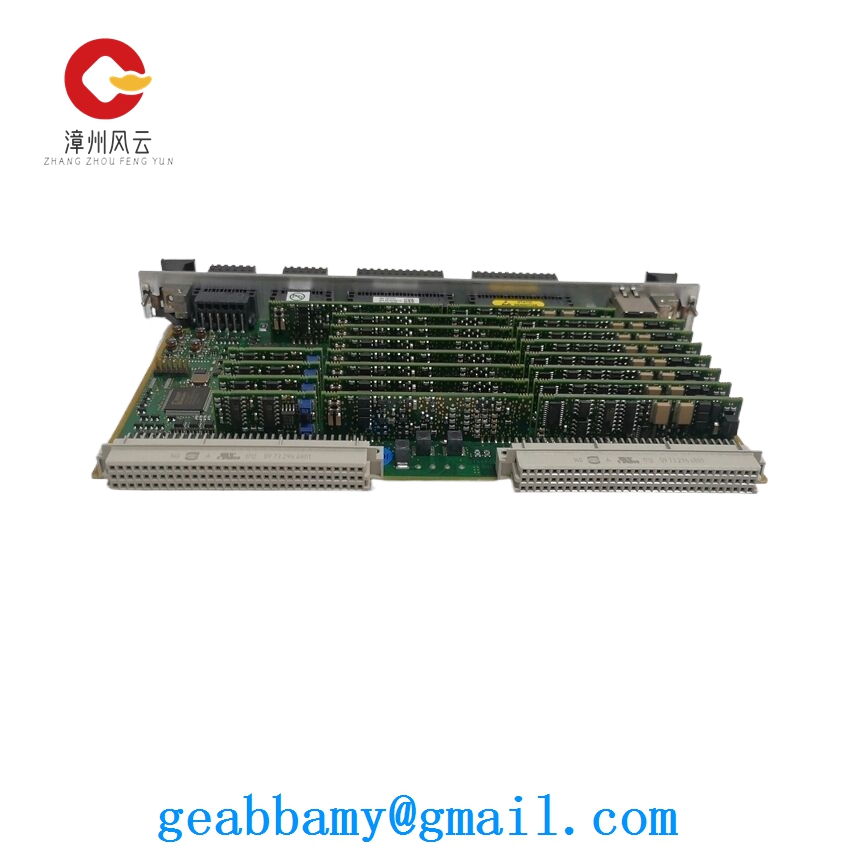Technical Parameters of Metso D100644 EFC Ethernet Fieldbus Signal Converter

1. General Information
The Metso D100644 EFC Ethernet Fieldbus Signal Converter is a key component in industrial automation systems, designed to bridge the gap between different fieldbus networks and Ethernet – based communication systems. It enables seamless data exchange between devices using various fieldbus protocols and Ethernet networks, facilitating efficient and integrated industrial control.
2. Communication Protocols
Fieldbus Protocols Supported
- PROFIBUS DP: This widely used fieldbus protocol in industrial automation is well – supported by the converter. It allows for high – speed data communication between programmable logic controllers (PLCs) and field devices such as sensors and actuators. The converter can handle the data transfer requirements of PROFIBUS DP, ensuring reliable and accurate signal conversion.
- Modbus RTU/TCP: Modbus is a popular communication protocol in the industrial sector. The D100644 EFC supports both Modbus RTU (over serial communication) and Modbus TCP (over Ethernet). This dual support provides flexibility in integrating with different types of industrial equipment, as many devices are compatible with one or both of these Modbus variants.
- Other Protocols: Depending on the specific configuration and firmware updates, it may also support other fieldbus protocols like DeviceNet, although the exact set of supported protocols should be confirmed from the official Metso documentation for the most accurate information.
Ethernet Protocols
- TCP/IP: The converter uses the Transmission Control Protocol/Internet Protocol (TCP/IP) suite for Ethernet – based communication. TCP/IP is the foundation of the modern Internet and is widely adopted in industrial Ethernet networks. It ensures reliable and ordered data transmission over Ethernet, allowing for seamless integration with industrial control systems that use Ethernet for communication.
- UDP: In addition to TCP, it may support the User Datagram Protocol (UDP). UDP is a connectionless protocol that offers faster data transmission at the cost of some reliability compared to TCP. It can be useful in applications where real – time data transfer is more critical than guaranteed delivery, such as in some process monitoring scenarios.
3. Signal Conversion Capabilities
Analog to Digital and Vice – Versa
- Analog Inputs: The converter can accept analog signals from field devices. It typically supports a range of analog input types, such as 4 – 20 mA current signals, which are commonly used in industrial sensors for measuring parameters like pressure, temperature, and flow. The number of analog input channels may vary depending on the specific model and configuration, but for the D100644 EFC, it can handle multiple analog inputs simultaneously.
- Digital Inputs/Outputs: Along with analog signals, it can process digital inputs and outputs. Digital inputs can be used to detect discrete states, such as on/off signals from switches or limit sensors. Digital outputs can be used to control actuators or other digital devices in the industrial process.
- Conversion Accuracy: The converter ensures high – accuracy signal conversion. For analog – to – digital conversion, it has a low error rate, typically within a few percentage points of the full – scale range. This high accuracy is crucial for maintaining the integrity of the industrial control signals and ensuring accurate process monitoring and control.
Fieldbus to Ethernet and Vice – Versa
- Fieldbus to Ethernet Conversion: It can convert data from fieldbus networks (such as PROFIBUS DP or Modbus RTU) into Ethernet – compatible formats (like Modbus TCP). This allows field devices connected to the fieldbus network to communicate with Ethernet – based control systems, such as SCADA (Supervisory Control and Data Acquisition) systems or human – machine interfaces (HMIs).
- Ethernet to Fieldbus Conversion: Conversely, it can convert Ethernet – based data into fieldbus protocols. For example, if a control command is sent from an Ethernet – connected PLC to a field device via the converter, it can translate the command into the appropriate fieldbus protocol for the target device.
4. Network Interface
Ethernet Interface
- Ports: The converter is equipped with one or more Ethernet ports. These ports are typically RJ – 45 connectors, which are the standard for Ethernet connections. The number of ports may vary, but a common configuration includes a single Ethernet port for communication with the Ethernet network.
- Speed: It supports Ethernet speeds of 10/100 Mbps, which is sufficient for most industrial communication applications. This speed allows for fast data transfer between the converter and the Ethernet – based devices in the industrial network.
- IP Addressing: The converter can be configured with a static IP address or can obtain an IP address dynamically using the Dynamic Host Configuration Protocol (DHCP). This flexibility in IP addressing simplifies the integration of the converter into existing industrial Ethernet networks.
Fieldbus Interface
- Connectors: The fieldbus interface of the converter uses appropriate connectors for the supported fieldbus protocols. For example, for PROFIBUS DP, it may use a 9 – pin D – sub connector, which is the standard for PROFIBUS communication.
- Termination: It may include built – in termination resistors for the fieldbus network. Termination resistors are important for preventing signal reflections on the fieldbus cable, which can cause communication errors. The ability to configure the termination settings (on/off) may be available through the converter’s configuration software.
5. Power Supply
- Voltage Range: The Metso D100644 EFC can operate within a power supply voltage range of [X] V to [Y] V (typically DC voltage, such as 24 V DC). This wide voltage range allows it to be powered by different types of industrial power supplies, providing flexibility in system design.
- Power Consumption: It has a relatively low power consumption, which is beneficial in industrial environments where power efficiency is important. The exact power consumption value may vary depending on the operating mode and the number of connected devices, but it is designed to minimize energy usage while still providing reliable performance.
6. Environmental Specifications
- Operating Temperature: The converter can operate within an ambient temperature range of [X]°C to [Y]°C. This temperature range ensures that it can function reliably in various industrial environments, from cool storage areas to hot manufacturing facilities.
- Humidity: It has a humidity tolerance of [X]% relative humidity (non – condensing). High humidity levels can cause corrosion and electrical insulation problems, but the converter is designed to withstand moderate humidity conditions, ensuring long – term performance.
- Vibration and Shock Resistance: The device is built to withstand a certain level of vibration and shock, which is common in industrial settings where machinery and equipment are in operation. It meets relevant industrial standards for vibration and shock resistance, ensuring its durability and reliability.
7. Configuration and Programming
- Software Tools: Metso provides software tools for configuring and programming the D100644 EFC. These tools allow users to set up the communication parameters, signal conversion settings, and other operational parameters of the converter. The software is user – friendly and provides a graphical interface for easy configuration.
- Firmware Updates: The firmware of the converter can be updated to add new features, improve performance, or fix bugs. Firmware updates can be performed using the provided software tools, ensuring that the converter remains up – to – date with the latest technological advancements.
In summary, the Metso D100644 EFC Ethernet Fieldbus Signal Converter is a versatile and reliable device that plays a crucial role in industrial automation by enabling seamless communication between different fieldbus networks and Ethernet – based systems. Its wide range of supported protocols, high – accuracy signal conversion capabilities, and robust environmental specifications make it a suitable choice for various industrial applications. For the most accurate and detailed technical parameters, it is recommended to refer to the official Metso product documentation or contact a Metso representative.


